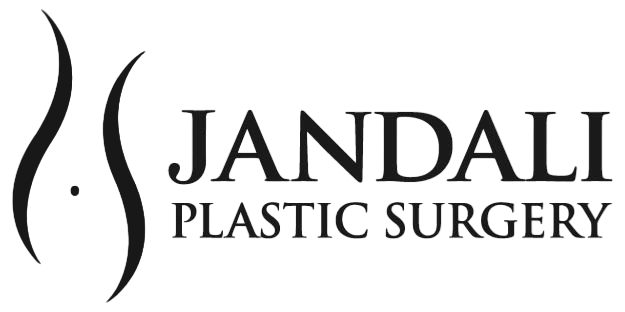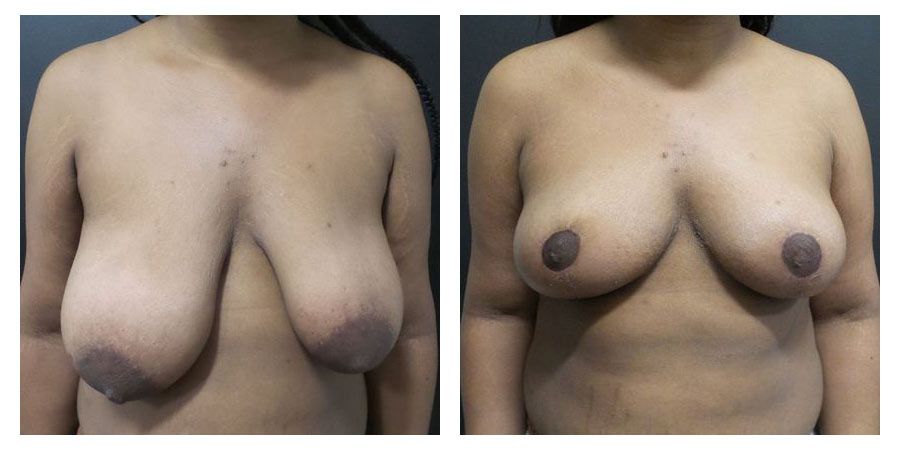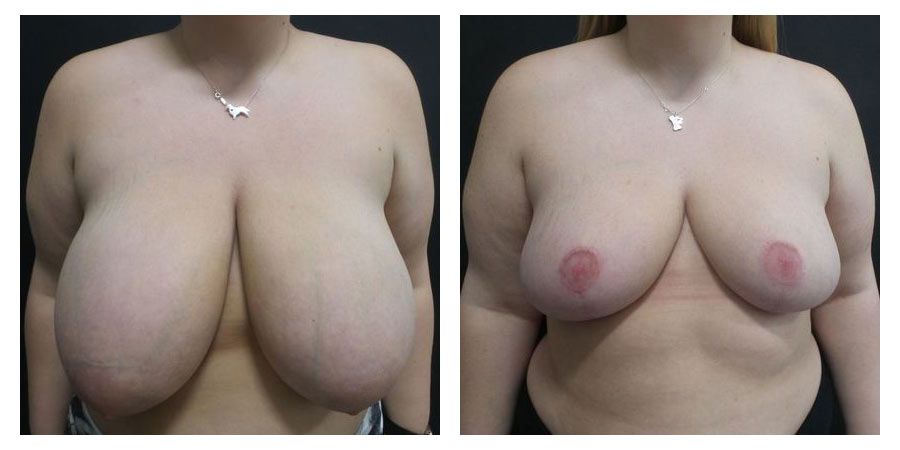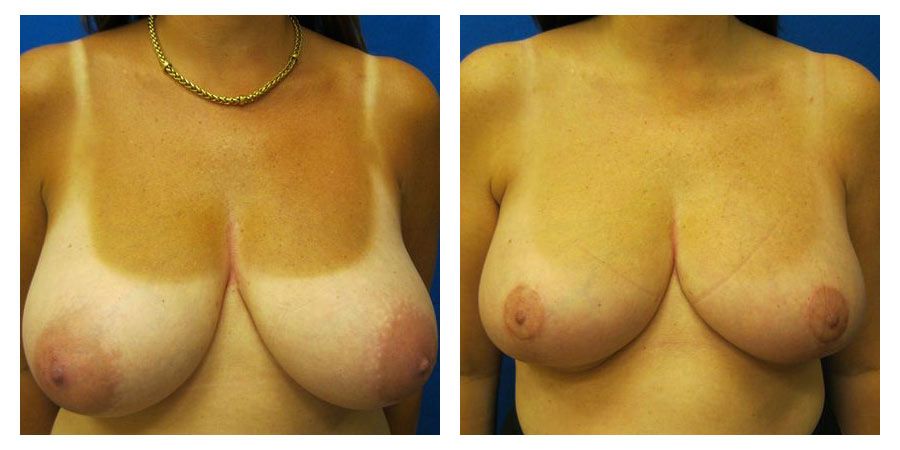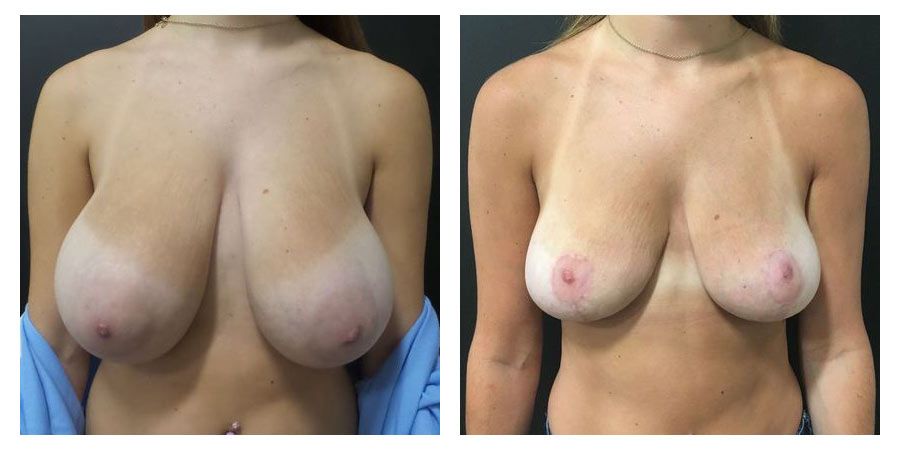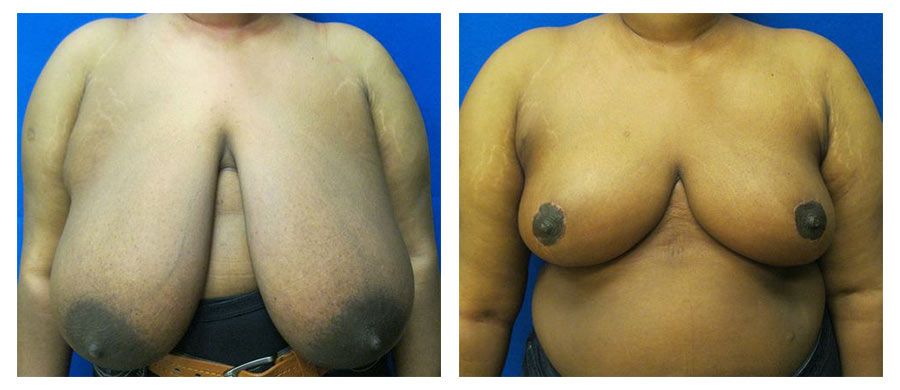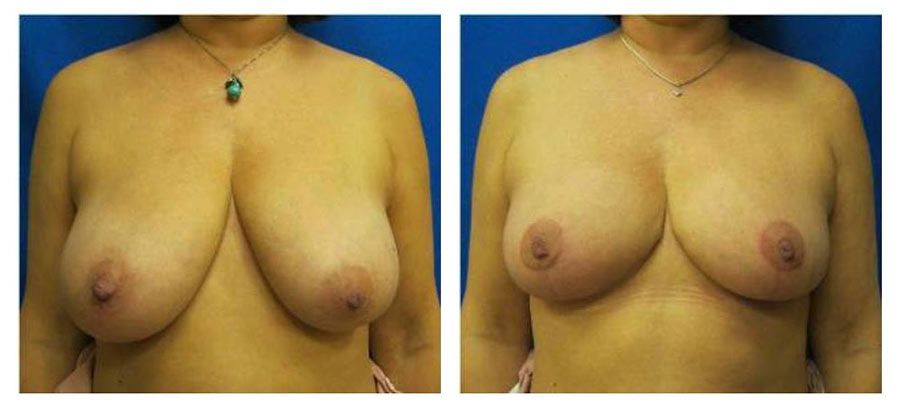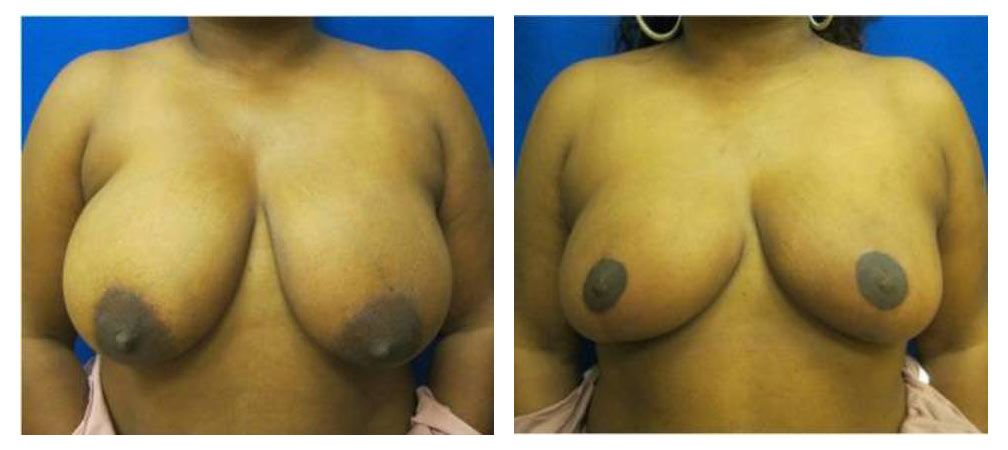Start with our original Breast Reduction Overview Series
Introduction: When Breasts Are Uneven, Both Physically and Emotionally
Most women have some degree of breast asymmetry — but when the difference becomes noticeable in size, shape, or nipple position, it can lead to frustration, discomfort, and difficulty finding clothing or bras that fit properly.
For some women, the asymmetry has always existed. For others, it develops over time due to hormonal changes, pregnancy, weight fluctuations, surgery, or aging.
At Jandali Plastic Surgery in Trumbull, CT, Dr. Shareef Jandali, a board-certified plastic surgeon who performs over 100 breast reductions every year, specializes in precision breast reduction and reshaping techniques to restore balance, proportion, and confidence.
He performs these procedures not only for cosmetic enhancement but also for functional and medical reasons — and many are covered by insurance when symptoms such as pain or rashes are documented.
Visit our Before and After Breast Reduction Gallery
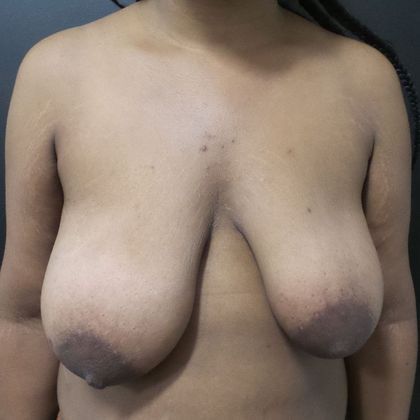
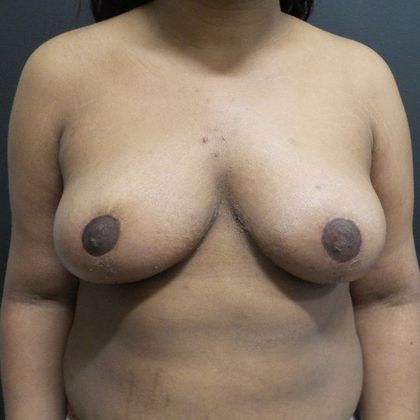
Why Breast Asymmetry Happens
1. Natural Developmental Differences
It’s normal for one breast to grow faster or slightly larger than the other during puberty. In some women, that difference never evens out.
2. Pregnancy and Breastfeeding
Hormonal changes can enlarge one breast more than the other. After breastfeeding, the larger side may deflate more, creating uneven volume or shape.
3. Weight Fluctuations and Aging
Fat distribution and skin elasticity can differ between sides, especially after weight changes, menopause, or weight loss from medications like Ozempic, Wegovy, or Mounjaro.
4. Previous Surgery or Trauma
Lumpectomy, implant surgery, or prior breast augmentation can create asymmetry that becomes more obvious over time.
5. Hormonal or Genetic Conditions
Conditions like juvenile hypertrophy or Poland syndrome can cause one breast to be significantly larger, denser, or shaped differently.
“I always had one breast a full cup size larger. Dr. Jandali finally made them even. The confidence I have now is something I never imagined.” — S.R., Fairfield, CT
Why Breast Reduction Is the Ideal Solution
While some women can benefit from augmentation of the smaller breast, most cases of asymmetry result from one breast being too large, heavy, or low compared to the other.
In these cases, breast reduction with reshaping and lift allows Dr. Jandali to:
- Remove more tissue from the larger breast
- Lift and reshape both sides for symmetry
- Reposition nipples to the same height
- Resize and balance the areolas
- Improve comfort, posture, and confidence
Unlike augmentation, which adds volume, this approach balances the body naturally using your own tissue.
The Art and Precision of Asymmetry Correction
Every patient’s asymmetry is unique — sometimes it’s a difference in size, sometimes in shape or position. Dr. Jandali’s goal is not to make the breasts identical, but balanced and harmonious with your frame.
During Surgery:
- Customized tissue removal: More tissue is removed from the larger breast.
- Mirror-image markings: Careful preoperative design ensures even lift and nipple positioning.
- Intraoperative comparison: Both breasts are meticulously compared before closure to ensure even shape and projection.
- Areolar resizing: The areolas are adjusted for uniform size and symmetry.
Insurance Coverage for Breast Asymmetry Correction
Insurance coverage depends on the cause and symptoms:
- If asymmetry causes physical discomfort (neck, shoulder, or back pain), coverage is likely.
- If one breast is significantly larger and symptomatic, reduction on that side is typically covered.
- If the other breast needs minor reduction or lift for symmetry, it’s often included in the same authorization.
At Jandali Plastic Surgery, our insurance team handles:
- Photo documentation
- Letters of medical necessity
- Coordination with primary care or oncology notes (for lumpectomy patients)
- Preauthorization and appeals
“Insurance covered my reduction on one side, and Dr. Jandali evened out the other for perfect balance. I finally look and feel normal again.” — J.C., Shelton, CT
Special Considerations for Asymmetry After Cancer or Lumpectomy
For women who have undergone lumpectomy or radiation therapy, asymmetry can be even more complex. Dr. Jandali frequently performs:
- Oncoplastic breast reconstruction: combining cancer removal with reshaping and lift
- Delayed correction procedures: months or years after treatment to restore balance
- Fat grafting or Renuva injections: to fill indentations or contour irregularities
These cases are always covered by insurance, regardless of the time elapsed since cancer treatment.
The Role of Fat Grafting and Renuva
When one breast appears smaller or more hollow after reduction or cancer surgery, Dr. Jandali uses autologous fat grafting or Renuva (a regenerative adipose matrix) to restore symmetry.
Benefits:
- Natural feel and contour
- Precise correction of mild volume differences
- No implants required
- Performed under local or general anesthesia depending on volume needed
Recovery and Results
Recovery after asymmetric breast reduction is similar to a standard reduction:
Timeline | What to Expect |
Days 1–3 | Rest at home; mild soreness; light walking |
Week 1–2 | Return to desk work or light activity |
Week 3–4 | Swelling subsides; shape continues to refine |
Week 6+ | Full activity; improved symmetry visible |
Final results are typically seen by 3–6 months, once swelling resolves and the tissues settle into their permanent contour.
“I used to have to wear padded bras to even things out. Now my breasts look perfectly balanced, even without a bra.” — A.F., Westport, CT
Scar Placement and Minimization
To correct asymmetry, Dr. Jandali uses either:
- Vertical (lollipop) incisions for moderate differences
- Inverted-T (anchor) incisions for larger reductions
He closes every incision with fine layered sutures to ensure minimal, flat, nearly invisible scars.
Postoperative scar therapy includes silicone gel, sun protection, and optional laser refinement.
Psychological and Emotional Impact
Breast asymmetry affects more than appearance — it can impact confidence, intimacy, and even posture.
After correction, women often describe an emotional shift:
“For the first time in my life, I feel even — not just physically, but emotionally.” — D.N., Norwalk, CT
Other patients notice improved confidence in:
- Workout clothes and swimsuits
- Everyday posture
- Professional settings and body language
Asymmetry Correction After GLP-1 Weight Loss (Ozempic, Wegovy, Mounjaro)
Rapid weight loss can unmask or worsen asymmetry. One breast may lose more fat than the other, or one may sit lower due to skin laxity.
Dr. Jandali frequently performs symmetry-based reductions for patients who have lost significant weight through medications or lifestyle change, combining:
- Breast lift and reduction
- Areolar reshaping
- Optional fat grafting for volume balance
Why Choose Dr. Shareef Jandali for Asymmetry Correction
- Board-Certified Plastic Surgeon with 15+ years of experience
- Performs over 100 breast reductions annually
- Hundreds of 5-star Google reviews
- Operates at Bridgeport Hospital and Park Avenue Medical Center (Yale-affiliated ASC)
- Specializes in precision asymmetry correction and revision surgery
- Offers insurance-covered options when medically necessary
- Known for natural balance and symmetrical results
“After years of feeling lopsided, I finally feel confident again. Dr. Jandali’s results are truly life-changing.” — C.M., Milford, CT
Serving Patients Across Fairfield County and Southern Connecticut
We perform breast asymmetry correction and reduction for patients from:
Trumbull, Fairfield, Bridgeport, Stratford, Milford, Shelton, Norwalk, Westport, Weston, Wilton, Easton, Monroe, Derby, Ansonia, Seymour, Oxford, Newtown, Bethel, and Southbury.
Patients also travel from Stamford, Greenwich, and New Haven County for Dr. Jandali’s expertise in advanced breast reduction and revision surgery.
Call to Action
If you’re living with uneven, heavy, or uncomfortable breasts, symmetry is possible — and it’s often covered by insurance. Schedule a consultation with Dr. Shareef Jandali to learn how personalized breast reduction and reshaping can restore balance, comfort, and confidence.
Jandali Plastic Surgery
5520 Park Ave, Suite WP-2-300, Trumbull, CT 06611
203-374-0310
Related Articles in the Advanced Breast Reduction Series
- Scars After Breast Reduction — How We Minimize, Heal, and Refine Them
- Teen Breast Reduction: Safety, Confidence, and Insurance Coverage
- Recovery Timeline After Breast Reduction Surgery
- Post-Pregnancy & Post-Weight-Loss Breast Reduction (Ozempic, Wegovy, Mounjaro)
- Breast Reduction vs. Breast Lift — Which Is Right for You?
- Breast Reduction After Prior Augmentation
- Breast Reduction for Older Women — Comfort, Posture, and Confidence
- Combining Breast Reduction with Liposuction — Enhanced Contour & Shape
- Breast Reduction and Asymmetry Correction
- Insurance-Covered Breast Reduction in Connecticut — What to Know
- Breast Reduction for Athletes
- Breast Reduction and Mental Health
- Breast Reduction and Back, Neck, and Shoulder Pain
- The Jandali Advantage — Why Experience and Volume Matter
- Breast Reduction and Bra Fitting After Surgery
- Revision Breast Reduction Surgery
- Nipple & Areola Shaping, Reduction, and Free Nipple Grafts
- Myths and Misconceptions About Breast Reduction Surgery
- Choosing the Right Size After Breast Reduction
